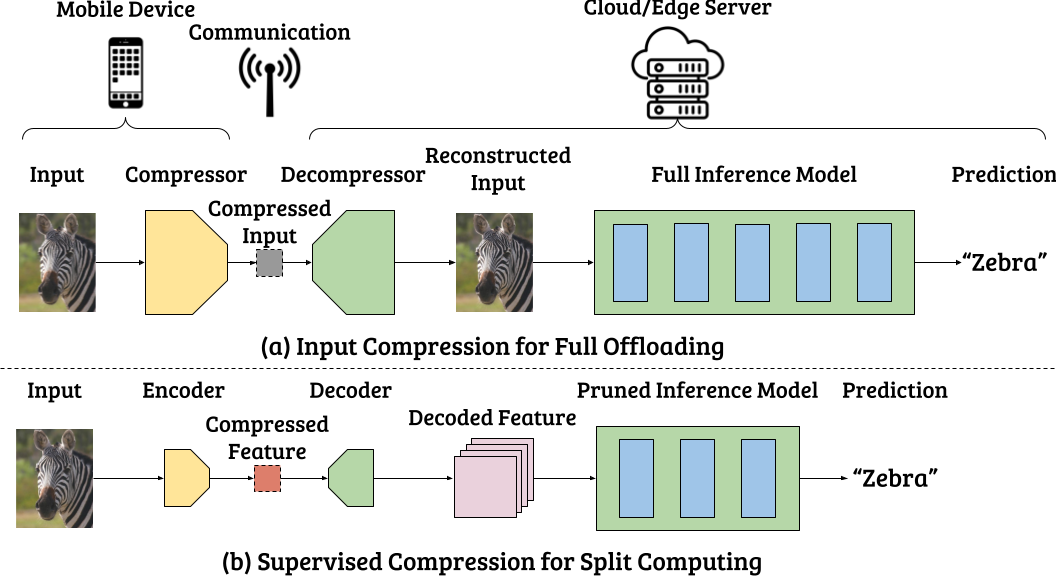Supervised Compression for Resource-Constrained Edge Computing Systems
There has been much interest in deploying deep learning algorithms on low-powered devices, including smartphones, drones, and medical sensors. However, full-scale deep neural networks are often too resource-intensive in terms of energy and storage. As a result, the bulk part of the machine learning operation is therefore often carried out on an edge server, where the data is compressed and transmitted. However, compressing data (such as images) leads to transmitting information irrelevant to the supervised task. Another popular approach is to split the deep network between the device and the server while compressing intermediate features. To date, however, such split computing strategies have barely outperformed the aforementioned naive data compression baselines due to their inefficient approaches to feature compression. This paper adopts ideas from knowledge distillation and neural image compression to compress intermediate feature representations more efficiently. Our supervised compression approach uses a teacher model and a student model with a stochastic bottleneck and learnable prior for entropy coding (Entropic Student). We compare our approach to various neural image and feature compression baselines in three vision tasks and found that it achieves better supervised rate-distortion performance while maintaining smaller end-to-end latency. We furthermore show that the learned feature representations can be tuned to serve multiple downstream tasks.
PDF Abstract


 ImageNet
ImageNet
 MS COCO
MS COCO